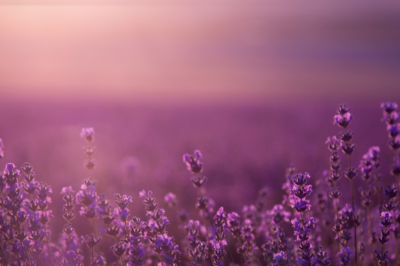Aphids can ruin the most beautiful plants in no time. The pesky little animals not only drain the plants of their lifeblood, but also produce a sweet dew that attracts ants. These in turn destroy the root system by their gangrene and thus cause the infested plant to die. So if ants suddenly appear in increased numbers, be sure to check your plants for aphids.

Planting lavender as a plant protection
However, aphids do not attack every plant species equally. In particular, species that produce many intensely fragrant essential oils are avoided by the vermin. Especially lavender is not liked by the little animals, although this statement does not apply to every lavender species. Less intensely fragrant lavender – such as lavandin – may well be attacked by aphids themselves, as may plants that develop few essential oils due to inadequate site conditions and care. Strongly fragrant lavender, on the other hand – most notably, crested lavender – is excellent for planting as a protective bastion against predatory insects, however. It’s best to plant them as a dense hedge or groundcover in the border, but keep in mind the different needs of each plant species. Lavender, a drought-loving plant, is far from compatible with every neighbor.
Lavender infusion as a remedy for aphids.
If aphids have already appeared, they can often be driven away by intensive treatment with an infusion of lavender. For this purpose, pour two generous handfuls of dried lavender flowers with a liter of boiling water and let the mixture infuse for a few hours. Then strain the flowers and spray the infested plants with the decoction. You should repeat the treatment several times, until the last aphid is gone. In addition, the lavender decoction can be used as irrigation water. In this case, the active ingredients of lavender are absorbed by the root and transported to the leaf veins, where the aphids absorb them. Instead of dried lavender flowers, you can also use a few drops of concentrated lavender oil – preferably from wild lavender, because the concentration of active ingredients is highest here.
Tips & Tricks
Mulch endangered or infested plants – roses, for example – with withered and dried lavender stems. With a little luck, the lavender will even self-seed and you can transplant new seedlings in the spring.

